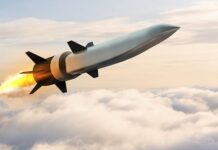Indian Military Review and Centre for Joint Warfare Systems will organise a seminar & exhibition on Military Power Systems on 8 Dec 2023 at New Delhi.
Military equipment often requires power systems that can withstand harsh environments and extreme conditions, such as high temperatures, shock and vibration, and electromagnetic interference – often operate at remote locations and be able to function under a wide range of temperatures.
Military equipment may be required to operate for extended periods of time without maintenance, which means that the power systems must be highly reliable and have long service lives. They must be lightweight and compact, so as to minimize the overall weight of the equipment.
Recent Developments
There have been several recent developments in lightweight, in providing military equipment with a reliable and long-lasting power source that is lightweight and compact, thus increasing the mobility and autonomy of the equipment. Some of the most notable include:
Lithium-ion Batteries: These have a high energy density, which allows for long-lasting power in a lightweight package. They also have a long service life and can be rapidly charged.
Fuel Cells: Highly efficient, lightweight, long-lasting power source, which can operate in remote locations.
Solar Power: Solar panels are a lightweight, long-lasting power source that can be used to generate electricity in remote locations. They can be integrated into military equipment.
Microgrids: Microgrids are small-scale power systems that can be used in remote locations to provide power to a single piece or to a group of equipment.
Hybrid Power Systems: These systems combine multiple power sources, such as batteries, fuel cells, and generators, to provide a reliable and long-lasting power source.
Power Systems for Drones
Small and large drones have different power system requirements, but some general requirements are common to both. Drones have limited space for power systems, so the energy density of the power source must be high to provide a long-lasting power source in a small package. Lithium-ion batteries and fuel cells are commonly used for this reason.
Drones are susceptible to Electromagnetic Interference (EMI) and Electromagnetic Compatibility (EMC) issues.
Power Systems for Fighter Aircraft
Fighter aircraft need to power the various systems on the aircraft, other than engines, ie, avionics and weapons systems. Weight is critical, hence, power system must be lightweight as well with high power-to-weight ratio.
For flying for extended periods of time without maintenance, the power system must be highly reliable and safe to use in punishing environments.
Power Systems for Submarines
Submarines have limited space for power systems. They need to be able to operate for extended periods of time without maintenance, in a high-pressure underwater environment, quietly to avoid detection.
Auxiliary power systems for submarines have several special requirements, including Compactness, high reliability, Safety, generate minimal noise and vibration, minimum downtime, and withstand the high pressure and low temperature of the underwater environment.
Power Systems for Soldiers
Soldiers need to carry their own equipment in the field in remote locations and operate in different harsh environment. Power
systems for soldiers must be lightweight to minimize the load on the soldier, must have a high energy density to provide long-lasting power source in a small package and be reliable and safe in a variety of environments.
Power Systems for Tanks
Besides the power pack, tanks require auxiliary power to operate the various systems on the tank, such as weapons systems, and communications equipment. They need to be able to operate for extended periods of time without maintenance.
Power Systems for Military Communications
Military communications have several special requirements, primarily EMI/EMC compatibility, portability and ruggedness.
Missiles and Strategic Systems
Missiles and strategic systems need to be able to operate for extended periods of time without maintenance. They are susceptible to EMI and EMC issues, and have limited space for power systems. Redundancy and safety factors are important in the case of missiles.
Alternate Sources of Power
There are increasing calls for military vehicles and equipment to reduce carbon emissions. Alternate sources of power are being explored.
Electric power can be generated from a variety of sources, such as solar, wind, and hydro, which are all renewable and produce no emissions. Electric power can be stored in batteries and used to power military vehicles and equipment.
Hybrid power systems, combining internal combustion engines with electric motors and batteries can improve the fuel efficiency of military vehicles and equipment.
Fuel cells, which convert chemical energy into electricity and can be powered by hydrogen, a clean-burning fuel that produces only water vapour when burned, can be used to power military vehicles and equipment.
Biofuels, such as biodiesel and bioalcohol, are being tried in transport aircraft. Propane, natural gas, solar energy, are other alternatives to traditional fossil fuels, with lower carbon content, which can be used to power military vehicles and equipment.
Critical Components and Materials
Military grade power sources and power systems require specialized components and materials that can withstand harsh conditions and demanding environments.
Military grade batteries and fuel cells must be able to withstand high temperatures, shock and vibration, and extreme conditions. Lithium-ion batteries and nickel-cadmium batteries are commonly used in military applications due to their high energy density and long service life. Military grade fuel cells typically use platinum and ceramics. Solar panels are typically made with materials such as silicon and glass.
Military grade power electronics, such as inverters and converters, use materials such as silicon and ceramic. Military grade cabling and connectors use materials such as copper and fibre optics.
Seminar Sessions
The seminar will have sessions on the following themes with opportunities for industry to make presentations:
• Industry Capabilities
• Power Packs and Storage Systems for Land Systems & Comms
• Power Supplies for Aerial and Maritime Systems
• Alternative Fuels & Renewable Energy for Military Applications



















